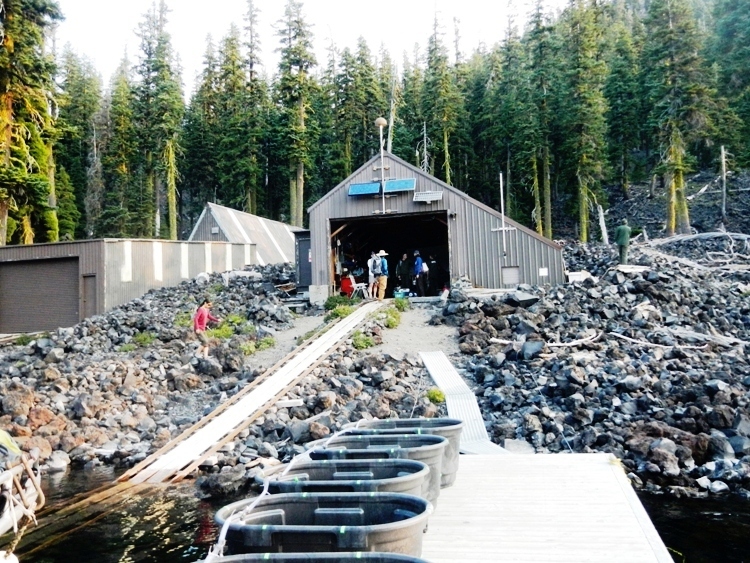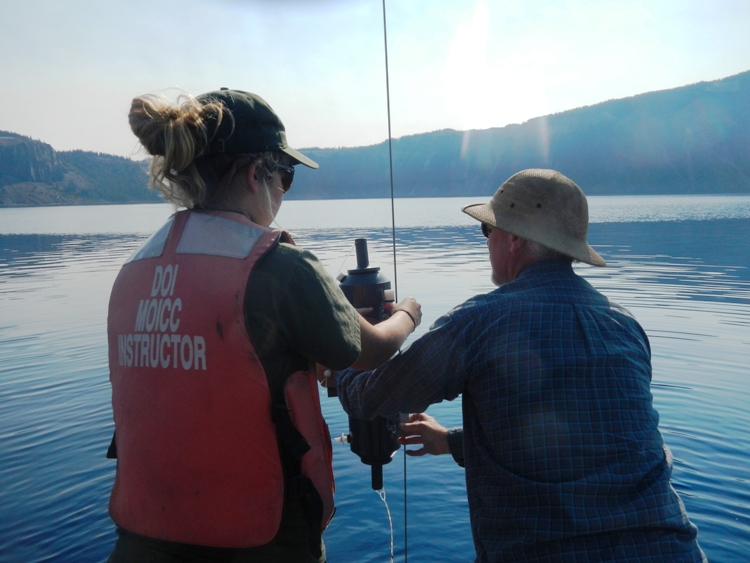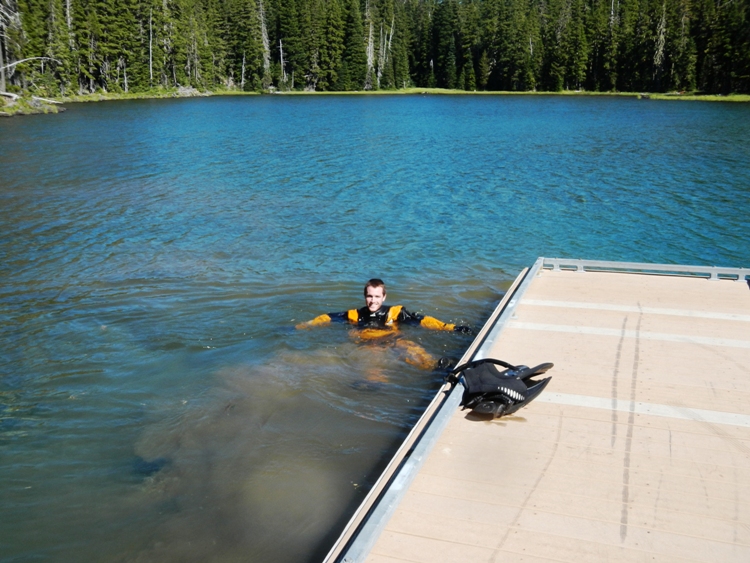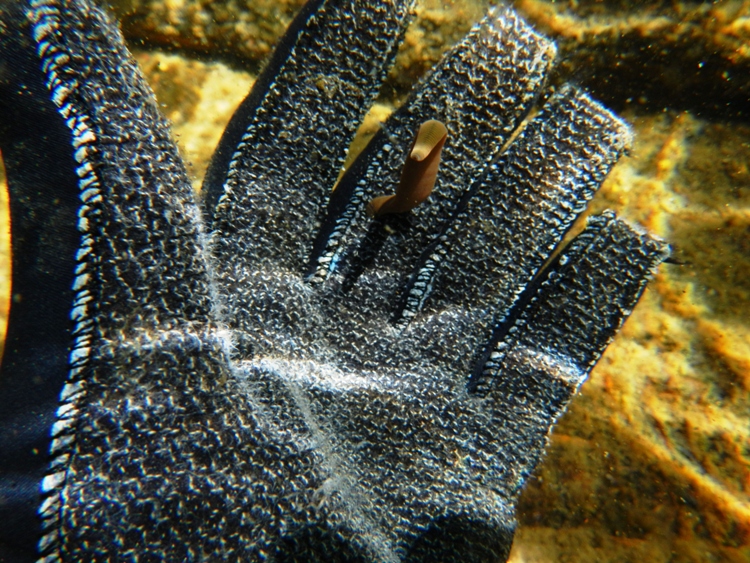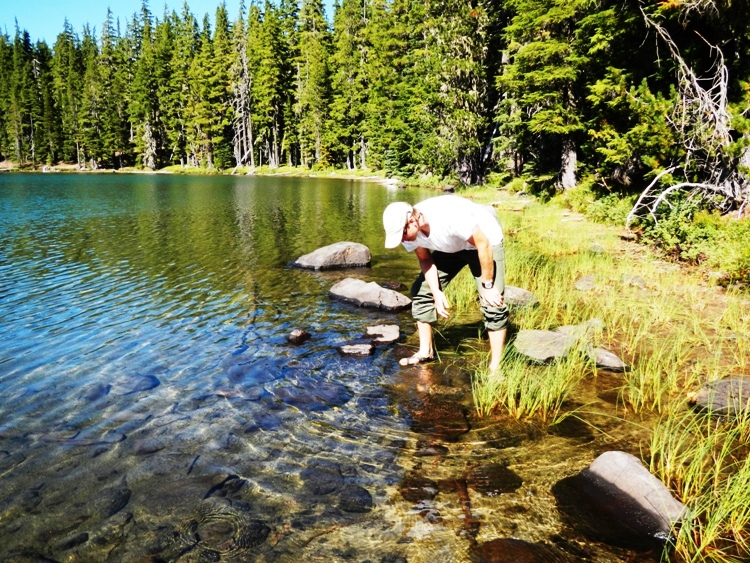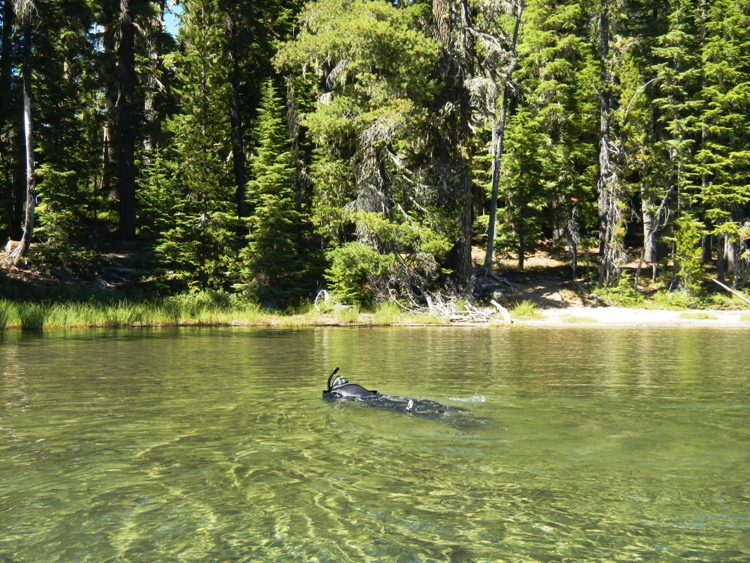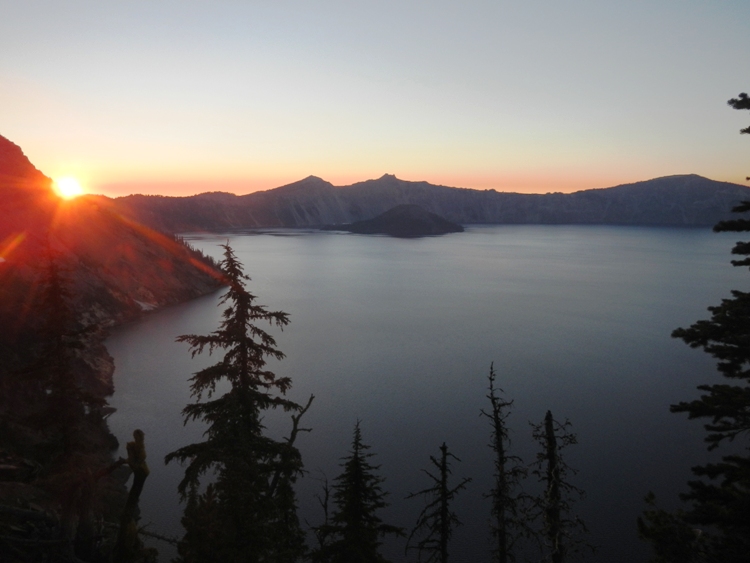After a few short hours of travel, my surroundings changed from 108 degree desert landscapes to evergreen forests and frosty, mountain lakes. I spent a great five days in Crater Lake National Park in Oregon; a park with the diver-friendly distinction of having one of the clearest bodies of water on Earth among other tremendous natural resources. The lake was formed over 7,000 years ago when a violent volcanic eruption created a massive container for the rains and snowmelts of the Pacific Northwest. All that water has also made Crater Lake the deepest lake in the United States, with a maximum depth of almost 2,000 feet! The lake’s unique ecosystem and physical properties bring together all sorts of eager scientists, making Crater Lake a must-see for any Submerged Resources Center intern whose interests lie in diving and science.
The legendary underwater visibility at Crater Lake is routinely measured to be over 100 feet. After hearing this fact I was expecting to see tropical waters, which often remind me of a fish tank or swimming pool because they’re both clear and fairly colorless. As my rental car chugged up the narrow road leading to the lake, I was absolutely shocked to see an electric blue color blasting through the blanket of trees that coats the rest of the scenery. These waters looked much more like a tropical fish than a tropical ocean – I’ve never seen such an iridescent blue color coming from water before!
Still brimming with excitement, I headed over to Park Headquarters to meet my hosts for the week. The park’s buildings and roads are located on the “caldera,” which is the steep volcanic ridge that surrounds the lake and its handful of tiny islands. I met aquatic ecologist Mark Buktenica, who offered even more excitement by telling me that I’d be spending my very first night at Crater Lake INSIDE the caldera! There is a rustic boathouse located on Wizard Island (the largest island in the lake) and we would be camping there so we could start work early the next day! The lake is only accessible by a steep two-mile hike from the top of the caldera to the water’s edge, so camping is a great way to avoid this morning “chore” (which is actually one of the best ways of seeing the lake from a variety of angles).
I completed the short hike with Mark and I met the rest of the crew at the water’s edge. Throughout the trip I worked closely with Mark, Scott Girdner, an aquatic biologist, Bob Hoffman, a USGS researcher, Drew Denlinger, Hilary Griffin, and Schannon Gehrke, the three biological science technicians, Sudeep Chandra, a visiting professor from University of Nevada Reno, and his inquisitive group of graduate and undergraduate students. We headed towards Wizard Island in a Park Service boat, ate a quick dinner, and listened to a presentation given by Scott about the research conducted in Crater Lake. It was really encouraging to see the strong collaboration that occurs between government and university researchers, as I used to think of those two groups as very separate entities. Throughout the week, Sudeep and the NPS/USGS researchers bounced dozens of ideas off of each other while discussing unusual data, troubleshooting current experiments, and brainstorming future research plans, which clearly strengthens the efforts of both groups of researchers. After the presentation and the following discussion, we all prepared for bed. We laid our cots and sleeping bags out on the dock and spent a brisk but beautiful night directly under the stars and moon.
We spent the next few days doing tons of different analyses on the unique water of Crater Lake. The lake’s research vessel (which originally had to be lifted by helicopters down to the lake!) was loaded with dozens of Niskin bottles, which are used to collect water from different depths in order to measure chemical and biological qualities. We sent Niskin bottles all the way down to 1,800 feet, which allowed us to collect important water samples. We were also able to drink the leftover water from each Niskin bottle – water from the depths of Crater Lake was definitely the purest and best-tasting water I have ever experienced! In addition to testing for the chemical properties of the lake, we also used fine-meshed nets to collect zooplankton samples. Aquatic life is generally very low in Crater Lake, which is one of the main reasons why there is such incredible visibility. The low levels of life, nutrients, and organic debris keep the waters crystal clear. Maximum concentrations of aquatic life commonly occur in the first twenty feet of a lake, but at Crater Lake the highest concentrations of life may be found hundreds of feet below the surface due to the extreme penetration of damaging UV rays through the clear waters.
On my last day in Oregon, I finally got to do some clear-water diving! Drew has been spearheading a study on the newts that are endemic to Crater Lake. Due to the isolation that these newts experience, they’re thought to be a completely different species than populations located just a few miles from the lake. Since Crater Lake’s newt population is currently at risk due to invasive crayfish, we could be watching an entire species go extinct without even knowing it! To confirm that Crater Lake newts are a unique species and secure protection under the Endangered Species Act, Drew searches out newts from surrounding lakes for comparison. On that particular day, we used SCUBA to go newt searching in Waldo Lake. I was in luck because Waldo Lake also has some of the clearest waters in North America with recorded visibility of over 120 feet! We didn’t end up finding any newts, but we saw lots of salamanders, some dragonfly larvae, and a few stray leeches.
I owe Mark, Scott, Sudeep, and their teams a big thank you for showing me such a distinctive park and teaching me about what makes it so special! None of my pictures really do the water any justice; personally seeing that glowing blue color in the middle of a thick evergreen forest is something that should be on every diver’s or nature lover’s wish list!



